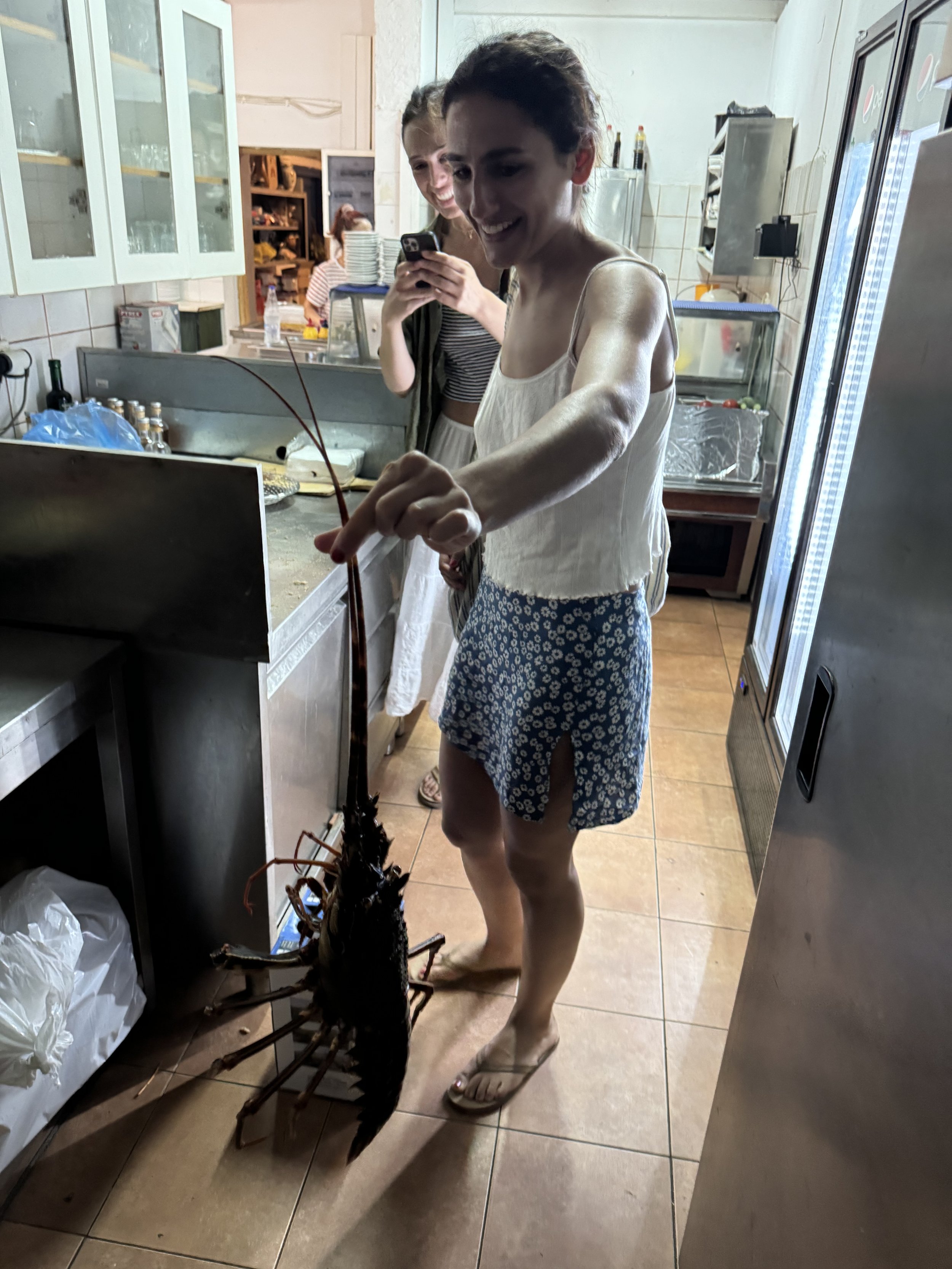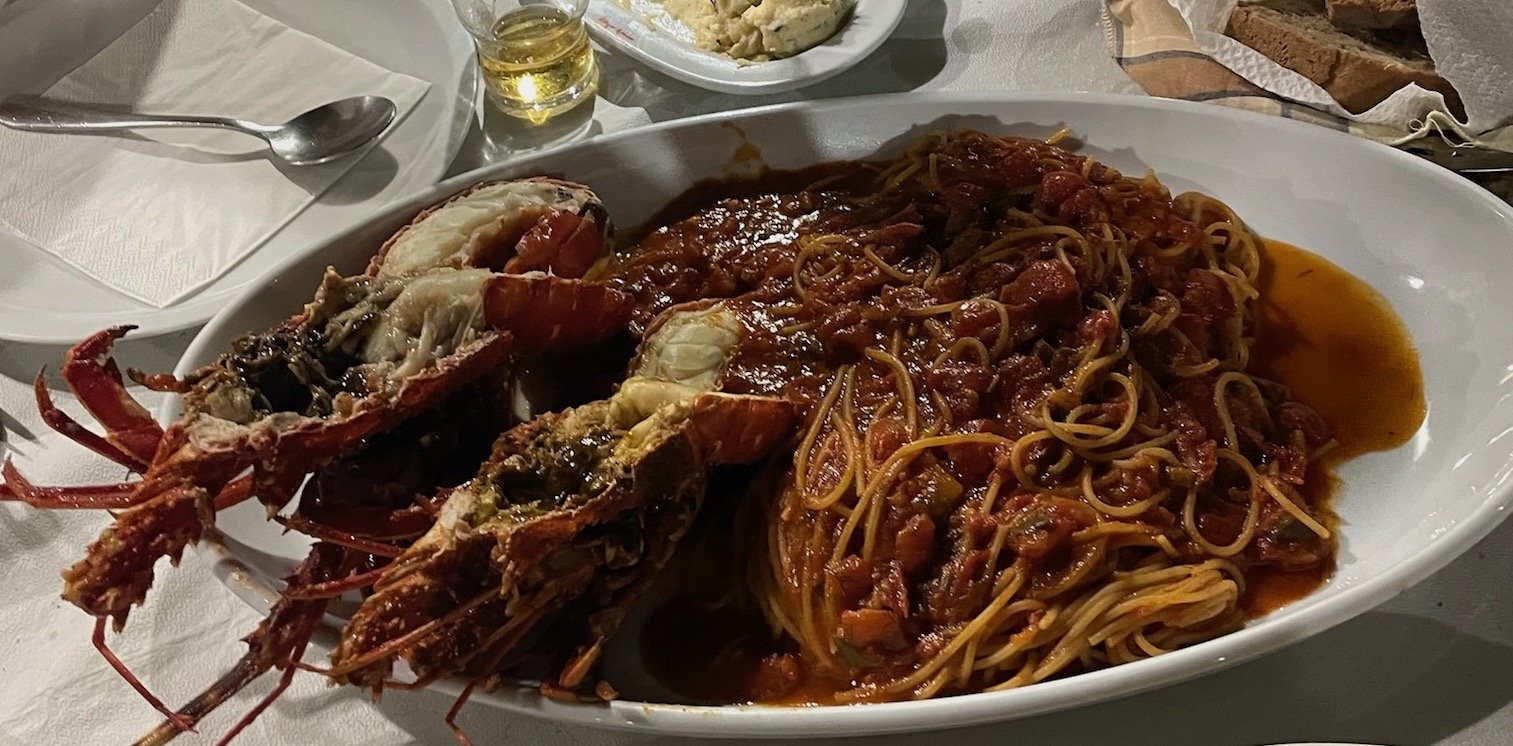Day 8, Astakomakaronada and other culinary delights
Astakomakaronada means Lobster Pasta in Greek, and it is a much celebrated gastronomic treat that the island offers. Our sources suggested the the Port of Linaria as the best spot to savor the dish; so off we go, driving about 10 miles south of Chora, to the harbor on the west coast of the island.
The only public boats that come to the island are ferries once a day, from Kymi, 12 miles away on the island of Euboea.
I have not seen a Greek harbor as cute, clean, well kept, and picturesque – I felt we were walking into a movie setting.
We made our way to Psariotis (Psari means fish in Greek) where I win a major bet! An American friend, our guest on the island, claims there can be no fresh lobster in the rather warm Greek sea, and that the restaurant probably serves frozen ones.
Asking our waiter, gets us introduced to the manager who, upon learning of our bet, takes it to heart to prove how fresh and live his lobsters are. A delightful walk into the kitchen, and a few minutes later we take turns holding the poor lobster by the tail, as it is trying to flex its legs attempting to escape.
What follows is an exquisite dinner and our American guest laughingly foots the bill!
There are endless culinary delights on the island, made out of wisdom recipes that have been handed down from generation to generation, such as: ladopita, a fluffy dough pie made with olive oil and served with local cheese; katsiki lemonato , goat meat, cooked with lemon juice in the oven; fava dip, made with pride from the quality fava cultivated on the island. I brought with me the most delicious fava dip recipe from Skyros, please stay tuned for a soon to come culinary meeting to practice making it together!
In the local market the visitor finds so many spices, hand-collected on the rocky hillsides: oregano, fliskouni, mint, bay ; and also chamomile and other infusion teas, and herbs with medicinal properties; my favorite Spatholado, an extract made out of spathohorto, the Greek equivalent of St John’s wort, purportedly heals abrasions and wounds when applied topically, and when taken internally, it alleviates fevers, indigestion, and other systemic ailments. Many households in Skyros produce their own flasks for medicinal uses at home.
I cant wait, tomorrow we will visit Mouries, the farm with the Skyrian horses…












